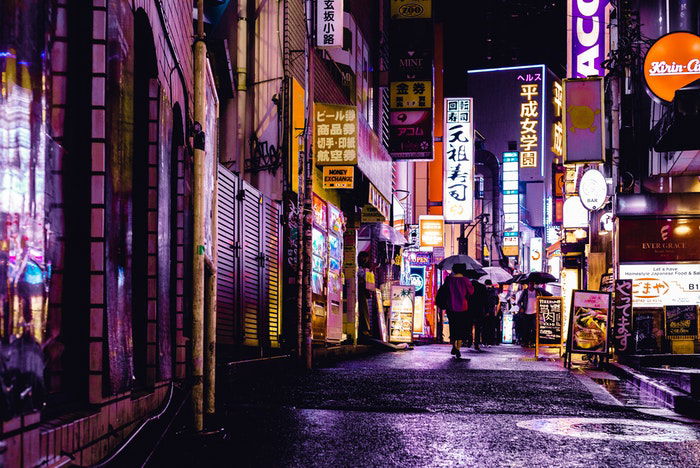Some Known Facts About Street Photographers.
Table of ContentsNot known Factual Statements About Street Photographers The smart Trick of Street Photographers That Nobody is DiscussingThe 5-Minute Rule for Street PhotographersThe Facts About Street Photographers RevealedFascination About Street Photographers
Road professional photographers do not necessarily have a social objective in mind, but they favor to separate and catch moments which could or else go undetected.Though he was affected by a number of those that influenced the road digital photographers of the 1950s and '60s, he was not chiefly thinking about recording the spirit of the street. The impulse to aesthetically document people in public began with 19th-century painters such as Edgar Degas, douard Manet, and Henri de Toulouse-Lautrec, that worked side by side with professional photographers trying to capture the essence of urban life.
Due to the fairly primitive modern technology readily available to him and the lengthy direct exposure time needed, he battled to record the hustle and bustle of the Paris streets. He trying out a series of photo approaches, attempting to locate one that would certainly enable him to catch activity without a blur, and he discovered some success with the calotype, patented in 1841 by William Henry Fox Talbot. Unlike Atget, photographer Charles Marville was worked with by the city of Paris to develop an encyclopaedic file of Haussmann's metropolitan planning project as it unravelled, therefore old and brand-new Paris. While the digital photographers' topic was essentially the very same, the results were noticeably various, showing the effect of the professional photographer's intent on the character of the pictures he created.
Provided the great high quality of his pictures and the breadth of product, engineers and artists commonly acquired Atget's prints to utilize as reference for their very own work, though commercial passions were hardly his main motivation. Rather, he was driven to picture every last residue of the Paris he loved. The mingled enthusiasm and urgency of his mission luster through, leading to photographs that narrate his very own experience of the city, qualities that anticipated street digital photography of the 20th century.
The 9-Minute Rule for Street Photographers
They expose the city through his eyes. His job and essential understanding of photography as an art form served as ideas to generations of digital photographers that adhered to. The next generation of road professional photographers, though they likely did not refer to themselves thus, was ushered in by the photojournalism of Hungarian-born digital photographer Andr Kertsz.
Unlike his peers, Brassa used a larger-format Voigtlnder electronic camera with a longer direct exposure time, forcing him to be extra calculated and thoughtful in his practice than he might have been if utilizing a Leica. (It is believed that he may not have actually had the ability to afford a Leica at that time, however he did, however, utilize one in the late 1950s to take colour pictures.) Brassa's photographs of the Paris abyss illuminated by man-made light were a revelation, and the compilation of the series that he released, (1933 ), was a significant success.
Cartier-Bresson was a champ of the Leica camera and among the first digital photographers to maximize its capabilities. The Leica enabled the professional photographer to interact with the surroundings and to catch minutes as they occurred. Its fairly tiny dimension additionally helped the digital photographer discolor right into the history, which was Cartier-Bresson's recommended method.
The 6-Minute Rule for Street Photographers
It is as a result of this fundamental understanding of the art of picture taking that he is frequently attributed with finding the medium throughout again approximately a century since its innovation. He took photographs for greater than a half century and affected generations of digital photographers to trust their eye and instinct in the moment.
These are the questions I will attempt to answer: And then I'll leave you with my very own meaning of street digital photography. visit homepage Yes, we do. Allow's begin with defining what a meaning is: According to (Street Photographers) it is: "The act of specifying, or of making something certain, distinct, or clear"
No, most definitely not. The term is both limiting and misguiding. Seems like a street digital photography must be images of a streets right?! And all road professional photographers, with the exception of a small number of absolute newbies, will fully appreciate that a road is not the crucial element to street photography, and in fact if it's a photo of a road with maybe a couple of uninteresting people not doing anything of passion, that's not road digital photography that's a picture of a street.
The Basic Principles Of Street Photographers
He makes a legitimate point do not you believe? Nevertheless, while I concur with him I'm not sure "candid public digital photography" will certainly catch on (although I do sort of like the term "honest photography") since "road digital photography" has actually been around for a long period of time, with several masters' names connected to it, so I believe the term is right here to remain.
You can fire at the coastline, at a celebration, in a street, in a park, in a piazza, in a cafe, at a museum or art gallery, in a metro terminal, at an occasion, on a bridge, under a bridge ...
Yes, I'm sites afraid we have no choice! Without policies we can not have an interpretation, and without a definition we do not have a category, and without a category we do not have anything to specify what we do, and so we are stuck in a "policies meaning category" loophole!
The 9-Minute Rule for Street Photographers
